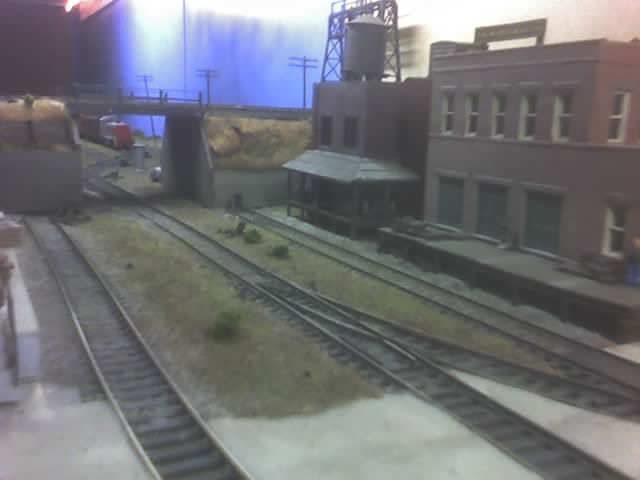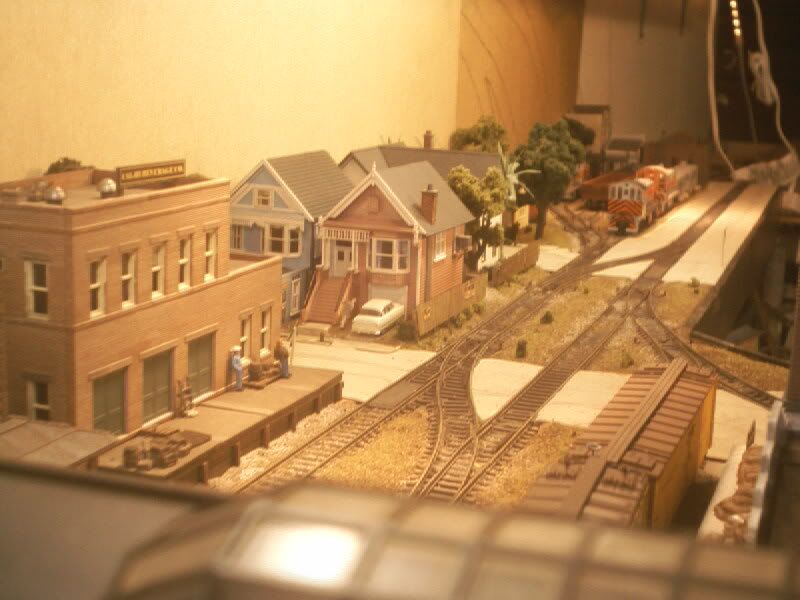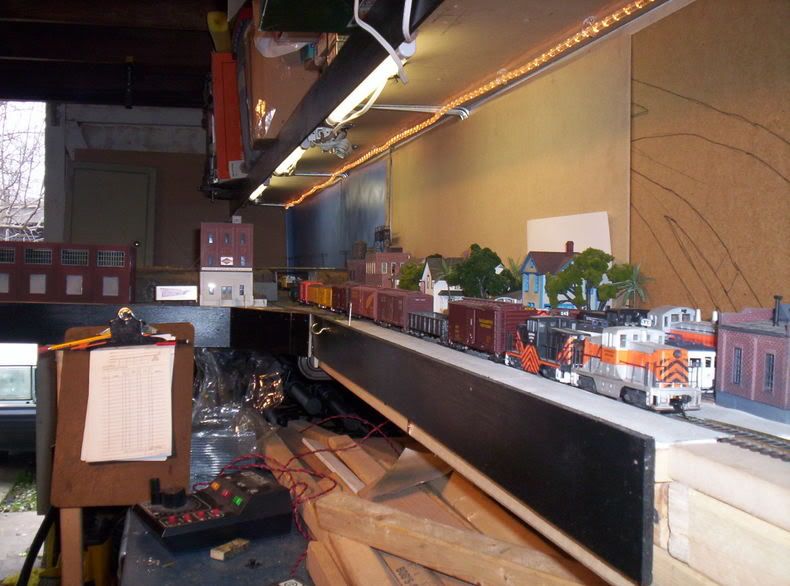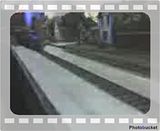Hey Guys:
I’ve got some questions. I have an around-the-room shelf arrangement ready for an operations oriented layout. I want to freelance a shortline mimicking something like the Los Angeles Junction or the Empire and Modesto shortline. My shortline will be located in Texas in the 1960s era and the source of traffic for the industries on the layout will be interchange from two major railroads, the Santa Fe and the Southern Pacific.
Let’s say I have two staging / interchange yards at the locations shown, one being the Santa Fe and the other being the Southern Pacific. Each interchange yard will have 6 or 7 tracks. The long tracks will hold maybe 11 cars, the short ones will hold maybe 5, so, on average, each track will hold about 8 cars.
Now, thinking about operations, would I want to divide each interchange yard into “arrival” and “departure” tracks? The cars on the arrival tracks would be picked up and set out at my industries, plus some would be going through to the other interchange. The cars that are picked up from my industries would be placed on one of the departure tracks at one of the two interchanges, depending on where in the “off-the-layout” world it was headed to.
Does this sound at least remotely prototypical? Any suggestions?
I’ve got some questions. I have an around-the-room shelf arrangement ready for an operations oriented layout. I want to freelance a shortline mimicking something like the Los Angeles Junction or the Empire and Modesto shortline. My shortline will be located in Texas in the 1960s era and the source of traffic for the industries on the layout will be interchange from two major railroads, the Santa Fe and the Southern Pacific.
Let’s say I have two staging / interchange yards at the locations shown, one being the Santa Fe and the other being the Southern Pacific. Each interchange yard will have 6 or 7 tracks. The long tracks will hold maybe 11 cars, the short ones will hold maybe 5, so, on average, each track will hold about 8 cars.
Now, thinking about operations, would I want to divide each interchange yard into “arrival” and “departure” tracks? The cars on the arrival tracks would be picked up and set out at my industries, plus some would be going through to the other interchange. The cars that are picked up from my industries would be placed on one of the departure tracks at one of the two interchanges, depending on where in the “off-the-layout” world it was headed to.
Does this sound at least remotely prototypical? Any suggestions?


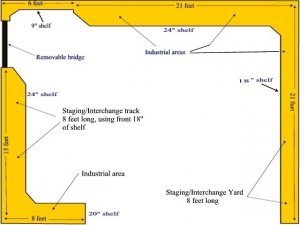
 ! But my "operating sessions" wouldn't be the normal 1 night affairs. Mine would be whenever I felt like running trains, and may extend for an hour here, an hour there, maybe for several weeks until I get all the incoming cars spotted at their industries, and all the pick-ups back to the departure tracks at the interchange. At that point, I would take the cars in the interchange off the layout, add new cars to the arrival tracks, and start all over.
! But my "operating sessions" wouldn't be the normal 1 night affairs. Mine would be whenever I felt like running trains, and may extend for an hour here, an hour there, maybe for several weeks until I get all the incoming cars spotted at their industries, and all the pick-ups back to the departure tracks at the interchange. At that point, I would take the cars in the interchange off the layout, add new cars to the arrival tracks, and start all over. 
